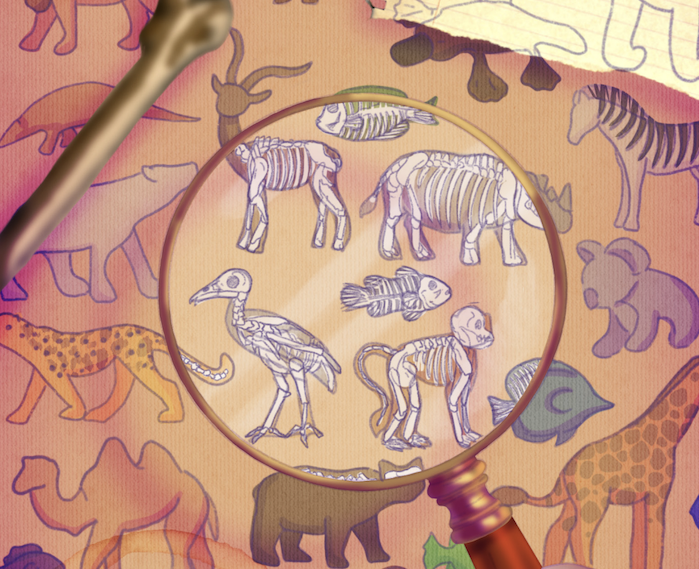Unlocking the secrets of ancient ecosystems through the lens of modern bones. Image credit: Allanah Booth, The Oxford Scientist.
Who we are and where we came from are two fundamental questions in life, and the answers to those questions still constitute a mystery. Although we can look to the fossil record for answers, these do not capture the whole truth. Not all materials fossilise, and so we have to infer information about ancient habitats (known as “paleoenvironments”), taxa, and diets from an incomplete record.
Instead of relying on this imperfect history, we can make educated guesses about ancient ecology and our ancestors’ behaviour from analysis of today’s life and environment. Paleoecology—the study of how organisms interact with their environments across different timescales—can teach us how life passes from the biosphere (the world’s ecosystems) to the lithosphere (the Earth’s crust), and what contributes to the preservation of materials such as bones. Knowing life’s transition from the biosphere to the lithosphere is essential to infer our identity and origin through fossil records.
Who we are and where we came from are two fundamental questions in life, and the answers to those questions still constitute a mystery.
This leads us to neo-taphonomy. Neo-taphonomy focuses on the events and changes occurring in living organisms immediately after death. It is a tool for understanding paleoecology from current life and environment. Through this approach, we can use the corpses of recently deceased animals to deepen our understanding of decomposition and preservation of organic remains, considering environmental and biological factors. The common organic remains we find in our fossil records comprise bones and teeth.
Bones and teeth are the best specimens of the past as these are the most prevalent fossils found. But it can often be difficult to recognise these artefacts as many forces may affect these fragile materials, such as erosion, faunal activities, and ice and heat damage. Neo-taphonomy makes demystifying these materials one step easier.
Much of what we know currently about the evolution of our own species came from fossil records found in Africa.
Much of what we know currently about the evolution of our own species came from fossil records found in Africa. For example, the famous hominin ‘Lucy’ (Australopithecus afarensis) was discovered in Hadar, Ethiopia, and an additional site in South Africa has been titled the “Cradle of Mankind”. This makes neo-taphonomic work from Africa key for accurately interpreting evidence regarding ancient human behaviour, as well as the paleoecology and paleoenvironment.
And so, although we will never have a perfect understanding of our past, studying modern bones in relevant environments, such as the last portion of the Southern East African Rift System in Gorongosa National Park, Mozambique, can start to reveal some of the mysteries of our early evolution.





